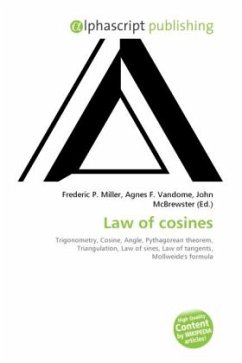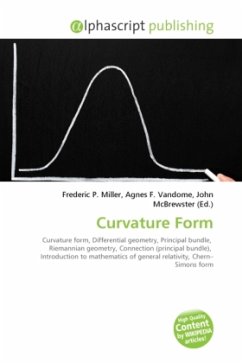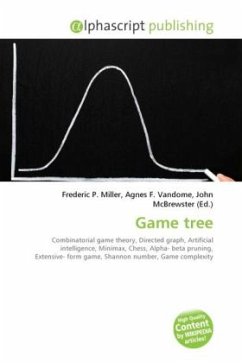
Law of cosines
Versandkostenfrei!
Versandfertig in 6-10 Tagen
23,99 €
inkl. MwSt.

PAYBACK Punkte
12 °P sammeln!
High Quality Content by WIKIPEDIA articles! High Quality Content by WIKIPEDIA articles! Though the notion of cosine was not yet developed in his time, Euclid's Elements, dating back to the 3rd century BC, contains an early geometric theorem equivalent to the law of cosines. The case of obtuse triangle and acute triangle (corresponding to the two cases of negative or positive cosine) are treated separately, in Propositions 12 and 13 of Book 2. Trigonometric functions and algebra (in particular negative numbers) being absent in Euclid's time, the statement has a more geometric flavor Proposition...
High Quality Content by WIKIPEDIA articles! High Quality Content by WIKIPEDIA articles! Though the notion of cosine was not yet developed in his time, Euclid's Elements, dating back to the 3rd century BC, contains an early geometric theorem equivalent to the law of cosines. The case of obtuse triangle and acute triangle (corresponding to the two cases of negative or positive cosine) are treated separately, in Propositions 12 and 13 of Book 2. Trigonometric functions and algebra (in particular negative numbers) being absent in Euclid's time, the statement has a more geometric flavor Proposition 12 In obtuse-angled triangles the square on the side subtending the obtuse angle is greater than the squares on the sides containing the obtuse angle by twice the rectangle contained by one of the sides about the obtuse angle, namely that on which the perpendicular falls, and the straight line cut off outside by the perpendicular towards the obtuse angle. Euclid's Elements, translation by Thomas L. Heath.












